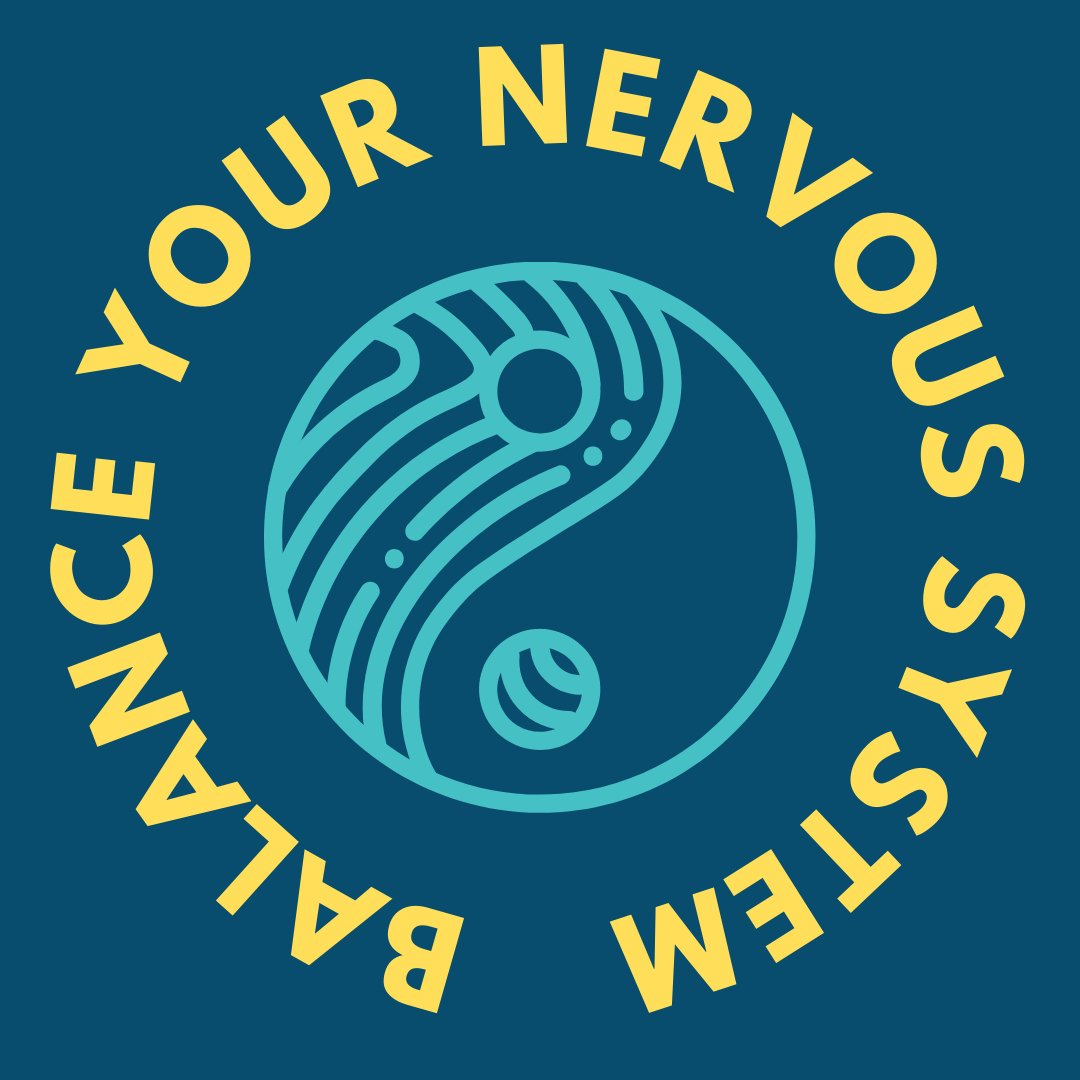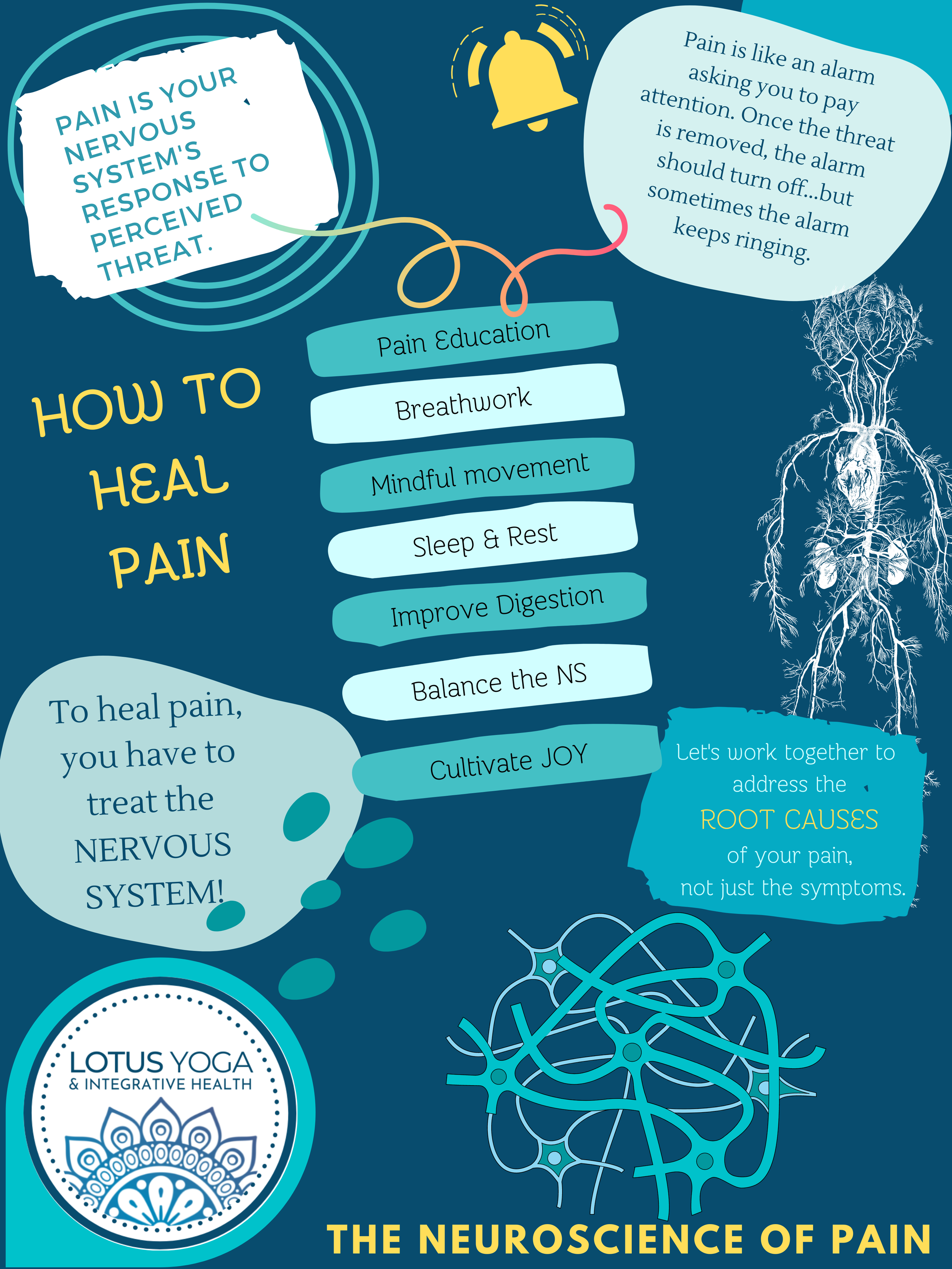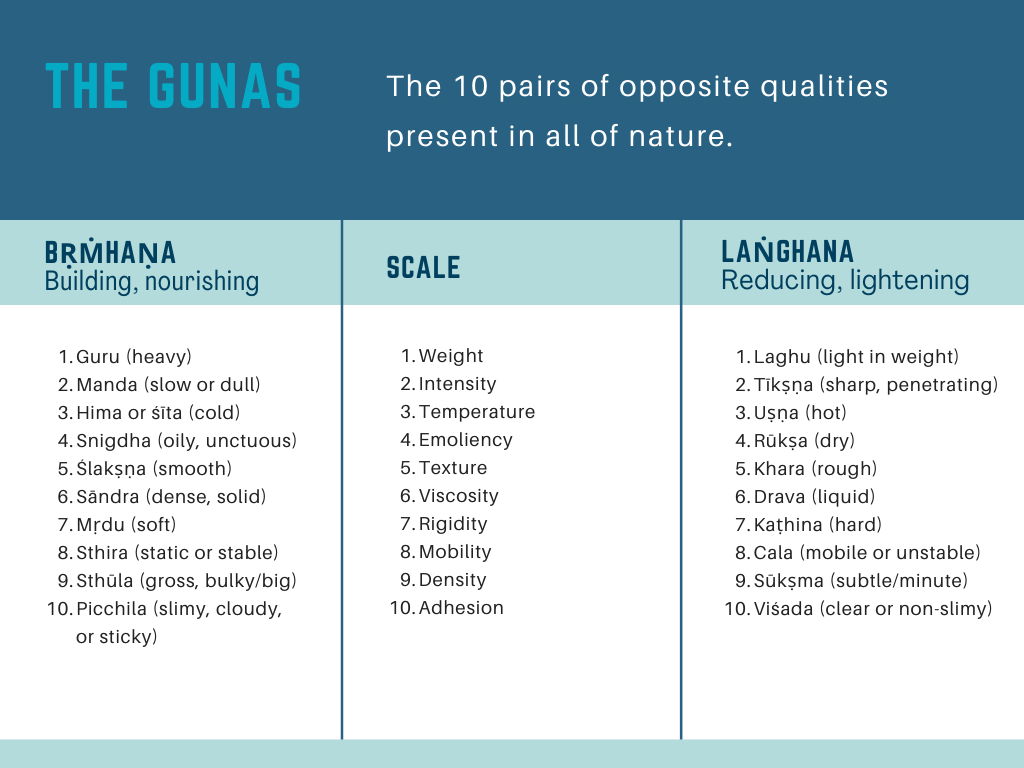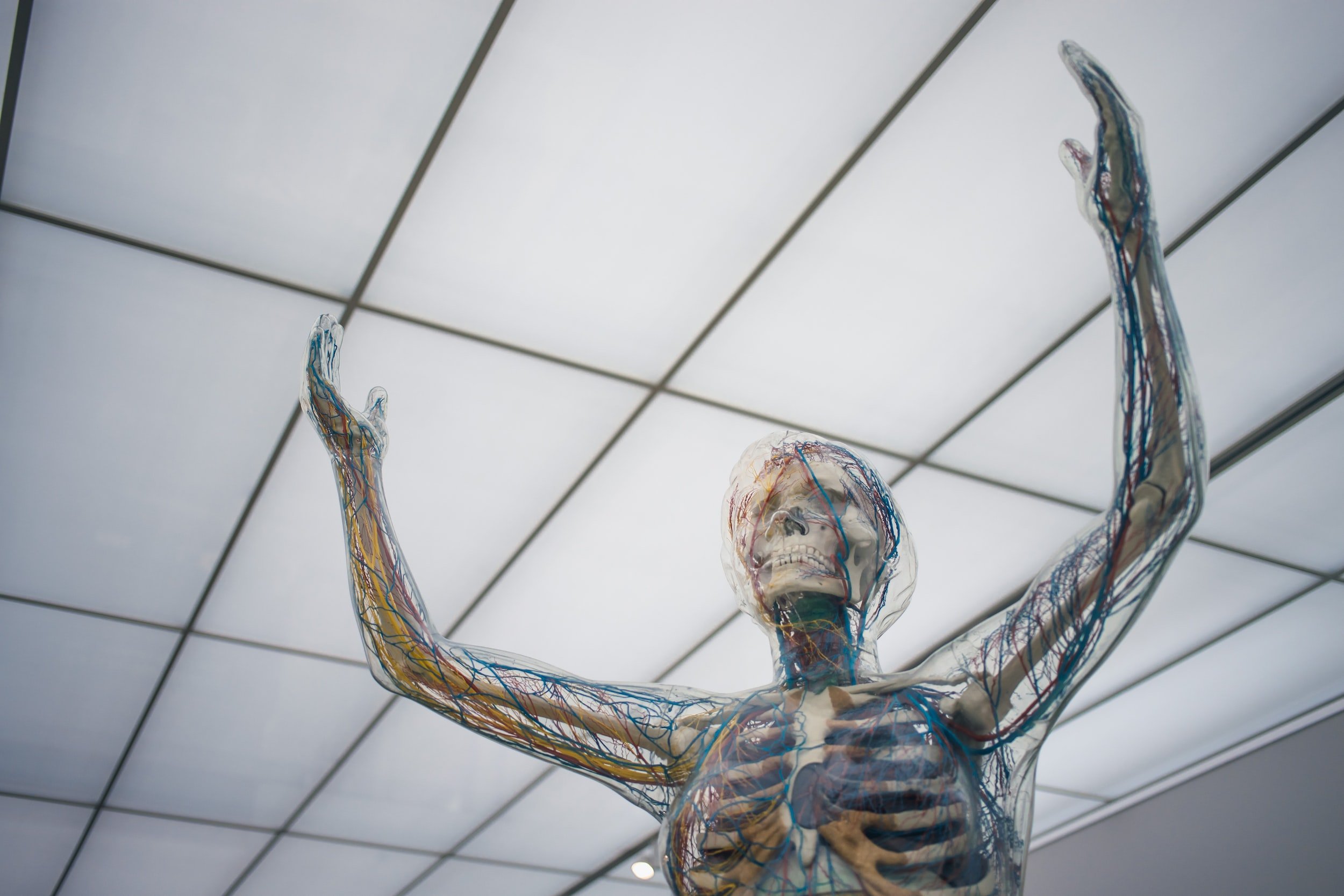search blog posts

How to Heal Chronic Pain
Learn the foundations of pain science and why understanding pain reduces the threat level and is essential to healing.

What are your Activators?
The body makes more receptors for its triggers to keep itself safe. Pain triggers include temperature, stress, movement, hormones, and oxygen levels.
Too many of one kind of channel makes you sensitive to that kind of stimulus. The good news is that these channels are replaced every 48 hours. If we understand what our triggers are, we can decrease that type of stimulus, and allow the channels to return to a balanced level so you are no longer extra sensitive to that kind of stimulus.

Stop being chased by a lion
If you have ongoing stress (including pain that lasts for a long time), your nervous system won't be able to tell the difference between a stressful day at work and an actual lion. The brain on pain can become so sensitive, that it is like you are living with a metaphorical lion chasing you at all times.

Your Nervous System Has a Bouncer
When we have chronic pain, the nervous system is attuned to look for danger, so the bouncers allow more information to pass up to the brain. Chronic pain makes the nervous system more sensitive, and when it gets bombarded by more information than usual, it is going to feel threatened by things that may not actually be dangerous. This is why sensations that aren’t typically painful, like light touch, can feel painful to those who are living with chronic pain.

The Big Three and the Key to Unlocking the Mystery
When the body experiences a stressor, such as an injury, illness, or trauma, the immune system, nervous system, and endocrine system all work together to defend against threat and bring the body back into homeostasis. These three systems are interdependent and act as one supersystem, so anything that affects one will affect all three.
This means that healing the nervous system will naturally bring both the immune system and the endocrine system back into balance and vice versa. It is also why persistent pain often progresses into autoimmune and/or endocrine disorders, and why these conditions can be so difficult to manage.

It’s not all in your head
Over the years I’ve seen a lot of people whose doctors dismissed them or made them feel like their pain was all in their head because they didn’t get better by treating their symptoms, and often the source of pain couldn’t be seen on an image. If you know my story, you know that this happened to me. I had excruciating pain and severe loss of function (I couldn’t make a fist with my right hand, so I couldn’t do basic things like hold a pen to write my name), and I had doctor after doctor tell me that I was fine because the MRIs didn’t show any signs of nerve compression.

It’s Really Not A Mystery
I used the word mysterious because most of the people who come to see me don’t understand why they are in pain, and their doctors often don’t understand either, but I don’t think it is a mystery at all. Pain is not just the result of injury. Pain is an alert from the body warning of potential danger.
What part of the body is responsible for responding to danger? The sympathetic nervous system.

Pain = Stagnation
We can harness the power of our attention to calm the nervous system and reduce pain, too. Pain is a form of energy stagnation, and when energy isn't able to flow, that stresses out the nervous system and amplifies the pain. One way to relieve pain is to get energy flowing again. Since prana follows citta, or energy flows where attention goes, when we spread our attention through our whole bodies in a yoga nidra or body scan practice, it can guide the energy to move out of stagnation and can significantly reduce pain.

Trust Your Gut
Did you know that your gut has its own nervous system, called the enteric nervous system, that is kind of like a second brain? The enteric nervous system has as many nerve cells as the spinal cord, and in collaboration with the gut microbiome, produces neurotransmitters that influence mood, immune function, hormone release, digestion, and pain. The enteric nervous system and the brain communicate with each other via the vagus nerve about things like nausea, hunger, fullness, emotion, discomfort, and danger. In other words, the gut and the brain are interconnected, which is why can get a stomachache when we are stressed, or get anxious when we are constipated. It is also why our digestion is affected when we are in pain, and why supporting a healthy gut is important in unraveling persistent pain.

The power of being heard
We have a real problem with our medical system right now. Doctors rely on lab tests and imaging for diagnosis, but the diagnostic tests aren't sensitive enough to detect issues at the early stages. Patients are often told to just come back if it gets worse, and unfortunately, that is exactly what happens. The consequence is that it teaches us to ignore our pain and override our body's built-in protective mechanism.

Balance your life, balance your nervous system
Persistent pain that lasts after the tissue has healed means the nervous system needs to heal. Balance your life; balance your nervous system.

Understanding pain
Pain is your nervous system’s response to the perception of threat. The first step to reducing pain is understanding it. Explaining pain reduces the perception of threat, which reduces pain. As pain comes down, function improves. The next step is to figure out your triggers, and build up your toolbox to help you manage those triggers. As you balance your life, you will start to balance your pain.










